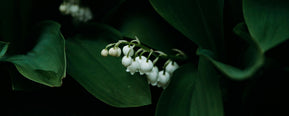What does rosewood smell like? Warm, smooth, and lightly floral, rosewood blends woody depth with soft sweetness. It’s valued in perfumery and aromatherapy for its balanced, subtle complexity.
Once prized in fine furniture, rosewood now plays a quiet yet essential role in fragrance—often used as a middle or base note to add elegance and depth.
This guide explores rosewood’s scent, its function in perfumery, and how its refined character appears in modern fragrances.
What is Rosewood?
Rosewood is a richly hued timber from the Aniba genus, native to South America. Historically sought after for fine furniture and instruments, it also offers an aromatic profile that’s found a place in eau de parfum.
But beyond its aesthetic and structural appeal, rosewood also possesses a distinct aromatic quality that has made it valuable in the world of perfumery.
Its essential oil emits a warm scent with soft floral notes, making it ideal for both masculine and unisex perfumes. Used as a middle to base note, rosewood enhances smoothness and adds earthy elegance to fragrance compositions.
What Does Rosewood Smell Like?
Rosewood carries a scent that’s both inviting and composed—a delicate interplay of warmth, woodiness, and soft floral undertones. It doesn’t demand attention in the way brighter notes do, but rather lingers with an effortless elegance that enhances the overall fragrance structure.
At its core, rosewood offers a woody and slightly earthy base, bringing depth without heaviness. What sets rosewood apart from other woods is its whisper of floral nuance, often compared to hints of rose or lilac, though never overtly so.
This combination of woody richness and floral delicacy gives rosewood its versatility. It pairs beautifully with citrus, spices, and florals alike, acting as a grounding force in everything from amber compositions to soft, woody blends.
Rosewood in Perfumery
Rosewood is often used as a middle to base note, bringing smoothness and longevity to a fragrance. Its woody character, with a subtle hint of rose-like aroma, lends balance and depth without overwhelming the composition.
Because of its versatility, rosewood often serves as the quiet backbone of a scent—creating a well-rounded experience that evolves gently on the skin. You may not notice it right away, but without it, a fragrance can feel incomplete or unbalanced.
Rosewood vs. Rose Scent
Though similar in name, rosewood and rose offer distinct olfactory profiles. Rosewood is woody and warm with faint, floral undertones. Rose is overtly floral, rich, and expressive. They can complement each other beautifully in a composition—but they are not interchangeable.
Rosewood Essential Oil and Its Scent
Rosewood essential oil scent mirrors the wood itself—warm, softly woody, and lightly floral. In aromatherapy, it's used for its soothing, grounding properties.
It’s worth noting that while rosewood essential oil and rosewood used in perfumery share a similar scent profile, they’re not always identical. The essential oil may present a slightly fresher and more delicate aroma, especially when used in natural, non-alcohol-based formulations.
The essential oil extracted from rosewood is rich in linalool, comprising approximately 85-95% of its composition. Linalool contributes to the oil's soothing properties and its characteristic floral-spicy aroma.
In aromatherapy, rosewood essential oil is prized for its soothing and grounding properties. It’s often used to ease stress, support emotional balance, and promote relaxation, making it a favorite in wellness blends and diffuser oils.
How Rosewood Ages
Does rosewood turn black with age? Yes—like many natural materials, rosewood changes over time. When exposed to air and light, its deep reddish-brown hue can darken, sometimes developing into a nearly black patina. This aging process is a natural oxidation effect and is especially noticeable in untreated or raw wood surfaces.
While this visual transformation is most relevant to rosewood used in woodworking or furniture, it adds a layer of mystique to the material’s character. In perfumery, however, the scent remains stable, preserving its warm, woody-floral quality over time.
Rosewood in Buchart Colbert's Collection
Buchart Colbert does not use rosewood in its fragrances—but fans of its warm, woody-floral quality will find similar elements across the collection. As one of today’s standout indie perfume brands, we craft fine fragrances with layered compositions featuring cedar, and vetiver among other notes, evoking the comfort, depth, and refinement that rosewood lovers appreciate.
The Enduring Allure of Rosewood
What does rosewood smell like? Rosewood’s scent—woody, soft, and subtly floral—brings balance and elegance to fragrance. Its understated profile enriches compositions without overpowering them.
Explore the world of Buchart Colbert and discover fragrances crafted with lasting impression and thoughtful detail.
FAQs
1. Why is rosewood so expensive?
Rosewood is one of the most exploited species of trees globally, used not only in perfumery but also in the creation of luxurious furniture, musical instruments, and rosewood essential oil. This high demand have pushed the species to the brink of extinction, leading to stricter regulations on harvesting and trade. As a result, supply has dwindled while demand continues to grow, driving up the cost significantly—with no signs of slowing down.
2. What is rosewood essential oil used for?
It is commonly used in aromatherapy to promote relaxation and emotional balance. Its soothing scent also makes it a component in skincare, massage oils, and natural perfumes.
3. Is rosewood a masculine scent?
Rosewood has earthy, woody qualities that are traditionally associated with masculine fragrances, but it’s also versatile and well-suited for unisex compositions.
4. What are the alternatives to rosewood in perfumery?
Due to sustainability concerns, alternatives like sandalwood, cedarwood, or palmarosa, are often used to replicate its scent profile.


